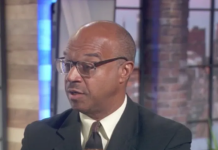AAA Kansas on Tuesday lobbied for new laws that it hopes will improve traffic safety, including one bill that would bar anyone under 18 from using a handheld mobile phone while driving.
Representatives for AAA appeared before the House and Senate Transportation committees, pitching their bills, including a second one that would toughen a law that requires drivers to approach disabled vehicles with caution on the road.
“We’re always focused on traffic safety,” said Shawn Steward, manager of public and government affairs for AAA Kansas.
“These kinds of bills are steps in the right direction,” he said.
“Are these bills perfect? No. But we’re working with a variety of different traffic safety partners, trying to work with the legislators to come up with solutions that make our roads and road users safe.”
AAA’s proposals do several things:
The Senate bill would expand the so-called move-over law, which now requires drivers approaching stationary emergency vehicles, tow trucks, utility trucks and garbage trucks to move out of the lane nearest the emergency vehicle or slow to a speed safe for conditions. The bill expands the law to cover all vehicles flashing their hazard lights or where flares or other warning signals are deployed. The bill adds a fine of $75 for a violation of the law.
The House bill would ban anyone under 18 from using a mobile phone. It would not apply to teen drivers using a hands-free mobile device. It also would ban all drivers from using a handheld mobile phone while going through a construction zone when workers are present and through a school zone during designated hours. The House bill has been heard in the Legislature before. The same bill got out of a Senate committee a couple years ago, but died in the full chamber.
The Kansas Highway Patrol backed both bills.
In testifying for the expanded move-over law, Highway Patrol Capt. Candice Breshears told the Senate Transportation Committee of the risks that troopers and other emergency crews face as they work perilously close to traffic.
Breshears said she once was hit by a truck while working on the side of a highway.
“Our troopers can attest to the danger they encounter on a daily basis when working on the side of the road,” she said.
“A matter of feet – and sometimes inches – can be the difference between conducting a safe traffic stop and being seriously injured or killed after being struck by a passing vehicle.”
She said drivers often have no choice but to stop on the shoulder of a highway when they blow a tire, their engine gives out or they run out of gas.
“We believe this law takes a common-sense approach to remedying an unsafe situation,” Breshears said.
The state Transportation Department reported that there were 688 empty vehicles struck while on the side of road from 2018 to 2022.
Those crashes resulted in 11 fatalities, 19 serious injuries, 198 minor injuries and another 513 only involving property damage.
There were another 64 crashes with someone in the vehicle while on the side of road during this same period.
Those crashes resulted in two fatalities, one serious injury, 49 minor injuries and 31 involving only property damage.
Later on Tuesday, AAA appealed to lawmakers on the House Transportation Committee to address mobile phones.
The bill drew support from the Kansas Highway Patrol along with the Kansas Association of Chiefs of Police along with the Kansas Contractors Association.
As executive director of the heavy construction industry in Kansas, Michael White said it’s not lost on his members the risk they face every day when going to work.
“I can assure you that every one of my members’ goal when they start the day is that every one of their workers goes home to their families that night,” White said.
“And it’s not always the case,” he said.
“This bill hits home very closely to our industry,” he said. “We are seeing more and more distracted driving. We all know it.”
White said there’s always been distracted driving, but it’s only worsened with the arrival of mobile phones.
“This bill is not perfect to our industry,” he said, noting that work zones can be several miles long and in some parts there might not be workers present.
“At the end of the day,” White said, “this is a real compromise to try to move something forward.”
During 2022, there were 58,734 vehicle crashes, according to state transportation department.
The leading cause of those crashes was generally inattentive driving at 17.4% followed by animal collisions at 12% and right-of-way violations at 10.5%.
Drivers using a mobile phone was blamed in 587 crashes during 2022, the data shows.
There were 1,232 crashes in work zones during 2022 resulting in 12 deaths and 375 injuries, according to state data.
The Transportation Department reported that there have been 88 fatalities and 5,389 injuries in nearly 12,500 distraction-related crashes from 2017 through 2022.
According to data compiled by KDOT, more than 155,500 crashes in Kansas since 2013 have involved distracted drivers, with costs totaling about $15.9 billion.
Some lawmakers question how the law could be enforced and whether there were other types of distractions that can be just a dangerous for drivers behind the wheel.
Republican state Rep. Nick Hoheisel of Wichita said he was generally supportive of the idea behind the bill but questioned how it might function in practice.
“I don’t think this solves the issue of distracted driving,” he said.
He questioned how much of a difference there was between a driver having a conversation while holding a phone and having a conversation on Bluetooth and holding a drink.
“To me, you’re still having a conversation. You still have something in your hand. Can you differentiate how we separate that?” Hoheisel asked the lobbyist for AAA Kansas.
Representing AAA, Travis Lowe said the bill is an effort to cut down on a significant risk on the state’s highways.
“We recognize there are lots of ways drivers can be distracted,” he said. “In this scenario, we’re really just trying to focus on having two hands on the wheel.”
















